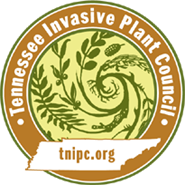Wisteria frutescens
Similar to Wisteria floribunda (Willd.) DC.
American Wisteria, Wisteria frutescens, is a less aggressive native twining vine, growing about 30 feet. It does not form the extensive infestations common with the Japanese or Chinese species and occurs mainly in wet forests. It flowers May to June with finely hairy clusters 4 to 6 inches (10-15 cm) of fragrant blue-lavender blossoms with a bright yellow spot after the foliage has emerged. Compound leaf has 9 to 15 leaflets. The seedpod is smooth with no hairs.
American wisteria is much easier to cultivate, requiring less maintenance, and flowers within the first year or two. The nonnative wisterias require rigorous maintenance and often do not flower for the first several years. Attracts butterflies.
The synonym Wisteria macrostachya, often applied to American wisteria, may also be found commercially as a separate species called Kentucky or Mississippi wisteria. One of the distinctions used to justify this as a separate species is longer flowering clusters 6 to 12 inches (15-30 cm).
Another synonym for W. frutescens/W. macrostachya is Kraunhia macrostachya.
